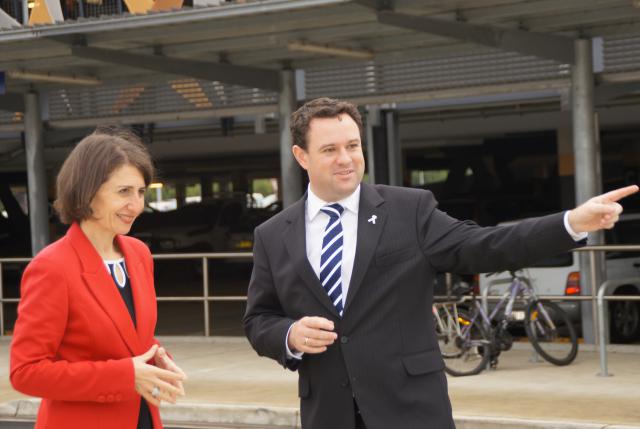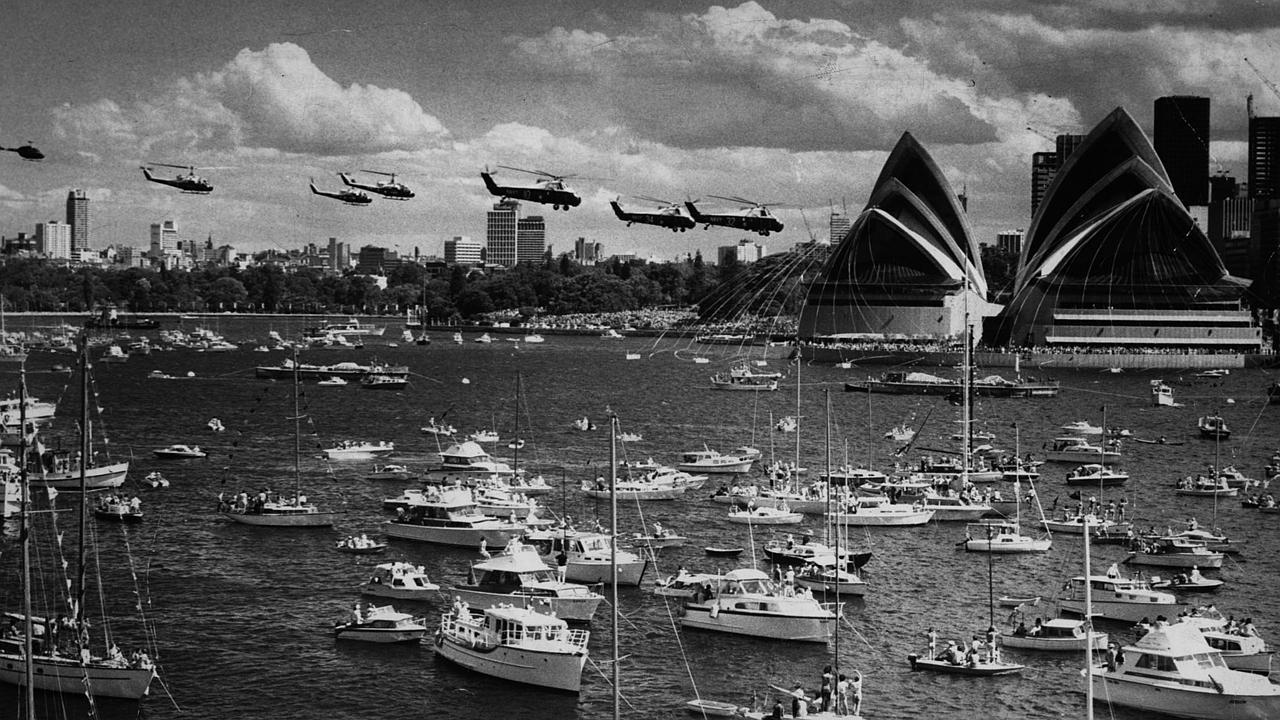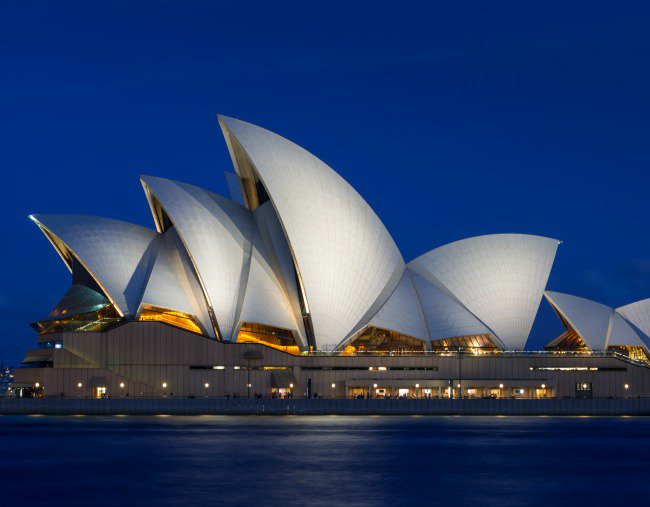By JUDITH WHITE updated 8 October
NSW Premier Gladys Berejiklian faces a groundswell of protest against her unprecedented decision to turn the Sydney Opera House into a billboard for the gambling and racing industry.
A demonstration against the decision has been called, to take place on the Opera House forecourt on Tuesday 9 October from 8pm – details here. And an online petition has gained more than 228,000 signatures in the first three days.
On 5 October, bowing to pressure from Horse Racing NSW and shock jock Alan Jones, Berejiklian ordered Sydney Opera House to project advertising for the 13 October Everest horse race on the building’s treasured sails.
It’s the first time anywhere that a World Heritage site has been handed over to the promotion of a gambling event.
The Opera House won the prestigious listing only in 2007 and UNESCO’s World Heritage Centre has announced that it is looking into the situation. Opera House CEO Louise Herron had predicted a problem, telling media: “If we said yes to this … we would lose our World Heritage status. We would be seen in the global community as not respecting this jewel.”
Herron’s objections – blindingly obvious as they seem – were brutally disregarded. Three powerful men drove Berejiklian’s decision to override her:
Peter V’landys, Horse Racing NSW CEO, is promoting next Saturday’s $13 million Everest stakes. It’s the world’s richest single race with an entry fee of a cool $600,000. V’landys, whose salary is undisclosed, is on a four-year contract with the racing body, which runs to 2020. He has had the audacity to accuse the Sydney Opera House of being “elitist” for resisting the advertising proposal.
Alan Jones, 2GB shock jock, spoke to Herron on his morning program on 5 October and subjected her to a tirade of abuse. “You don’t own the Opera House,” he told her, “we own it.” Just who “we” is remains a moot point. Jones, recently found guilty of defamation in Queensland’s Supreme Court and ordered, together with 2GB, to pay $3.75 million in damages and costs, is used to getting his own way in NSW. He sits on the board of the Sydney Cricket Ground Trust, which has persuaded the government to knock down its 30-year-old Philip Cox designed Allianz Stadium and rebuild it at a cost of $730 million, starting in January 2019.

Sports Minister Stuart Ayres, right, with Premier Berejiklian
Stuart Ayres, NSW Sports Minister, brokered the deal with Horse Racing NSW. He reportedly suggested the Opera House sails as the place to advertise, and made sure the Premier was briefed on the issue in time to comply with Alan Jones’s wishes. Ayres has form with Jones. He was the minister who led the push for the $2.3 billion Sydney stadiums revamp of which the Allianz rebuild is the major part. Ayres is also Minister for the controversial, much-delayed WestConnex and for Western Sydney. His move against the Opera House is yet another step in the NSW Government’s takeover of cultural venues management from the statutory bodies which supposedly control them.
No recent incident says more about the crisis facing the arts in Australia than the desecration of Sydney Opera House engineered by this trio. The nation’s proudest cultural achievements are being placed at the mercy of corporate greed and unprincipled politics.
Architects, artists and heritage experts are speaking out against the ad campaign. Sydney Lord Mayor Clover Moore has slammed Berejiklian’s decision, calling it “blatant commercialisation of Australia’s World Heritage-listed Opera House for an industry notorious for damaging gambling and animal cruelty.”
Significance of Sydney Opera House
What a way for the NSW Government celebrate the 45th anniversary of the country’s most recognised building! When the Sydney Opera House was opened on 20 October 1973, it was a pivotal moment not just in the life of the city but in Australian history. Financed by a popular lottery, paradoxically it demonstrated that we were much more than a nation of punters.

The 1973 opening of Sydney Opera House
Initiated by Joe Cahill’s Labor government in 1958, the project overcame considerable difficulties. Jørn Utzon’s ground-breaking design was compromised after the government of Robert Askin, elected in 1965, cut back on spending, but nonetheless by the time it opened the Opera House had won popular support, worldwide recognition and even bipartisan backing,
It signalled the end of the cultural cringe, and it was the precursor of the flowering of the arts that came in the 1970s. How times have changed.
Coming from the sell-your-grandmother NSW Coalition Government, the decision to force the racing advert on the Opera House is scarcely a surprise. This is the same government that is demolishing the Powerhouse, one of the country’s most significant museums, in the interests of developers; a government that is cynically using its windfall from selling electricity poles and wires for pork-barrelling projects and secretive deals, instead of investing in the long-term cultural needs of the state.
Will the Trust and the Opposition please stand up?
Where is the Sydney Opera House Trust in all this? There’s no statement as yet from its chair Nicholas Moore. As CEO of the Macquarie Group, he’s one of a number of bankers the Coalition Government has promoted to key board positions in the cultural sector. Will he support his CEO, and stand up to the racing industry?
The mission of the Trust that Moore heads is defined as being:
- To treasure and renew the Opera House for future generations of artists, audiences and visitors;
- To inspire, and strengthen the community, through everything we do.
There is no reference to the promotion of gambling.
The other big question about Berejiklian’s edict is: Where is the Opposition? Disgracefully, on the same morning Jones monstered Louise Herron on 2GB, both State Opposition leader Luke Foley and Anthony Albanese, Federal Shadow Minister for Infrastructure, Cities and Tourism, rang the ABC to support Horse Racing NSW. Albanese, the supposedly “left” face of Labor, even said that objectors should “chill out a bit… The fact is that this race is beamed around the world.”
The best-loved image of Sydney beamed around the world is that of the Sydney Opera House itself. It’s the face of a cultured Australia. For Foley and Albo to support its vandalisation indicates the sorry decline of a party once synonymous with support for the arts. Foley is from the right-wing faction of NSW Labor, Albanese from the left, but they both seem unable to differentiate Labor from the Government’s philistine decisions. It’s a long way from Gough Whitlam’s vision of the arts as central to the life of the whole community.
In place of vision, we have a race to the bottom between the two major parties. Abandoning any pretence of a coherent cultural policy, they ransack the arts budget, play up to the big end of town and go to huge lengths to protect government revenue from gambling – which in NSW alone amounts to billions annually.
But as the disgust at Berejiklian’s Opera House decision demonstrates, many Australians still hold dear the vision of a society where culture has pride of place, and belongs to us all.
The major political parties are placed on notice: You trash our heritage at your own peril. This fight has a long way to run – way beyond the winning post at Randwick next Saturday.





Leave A Comment